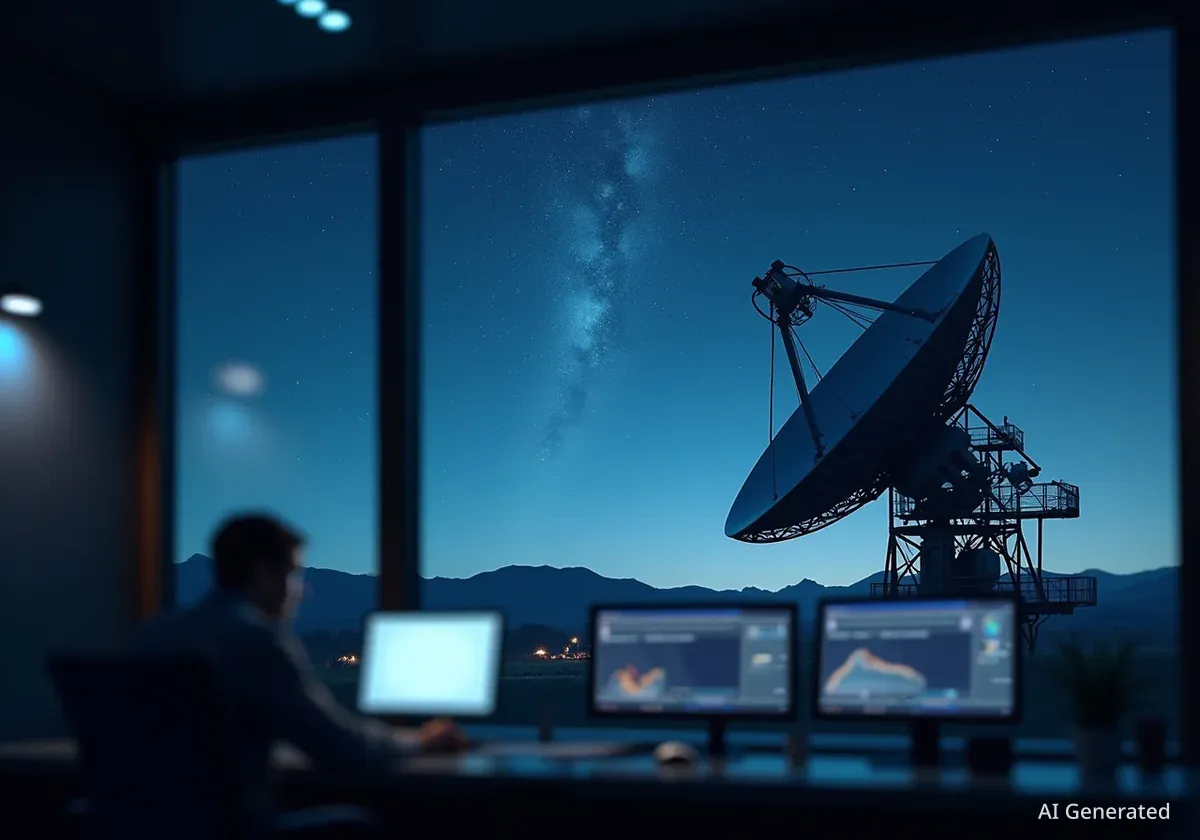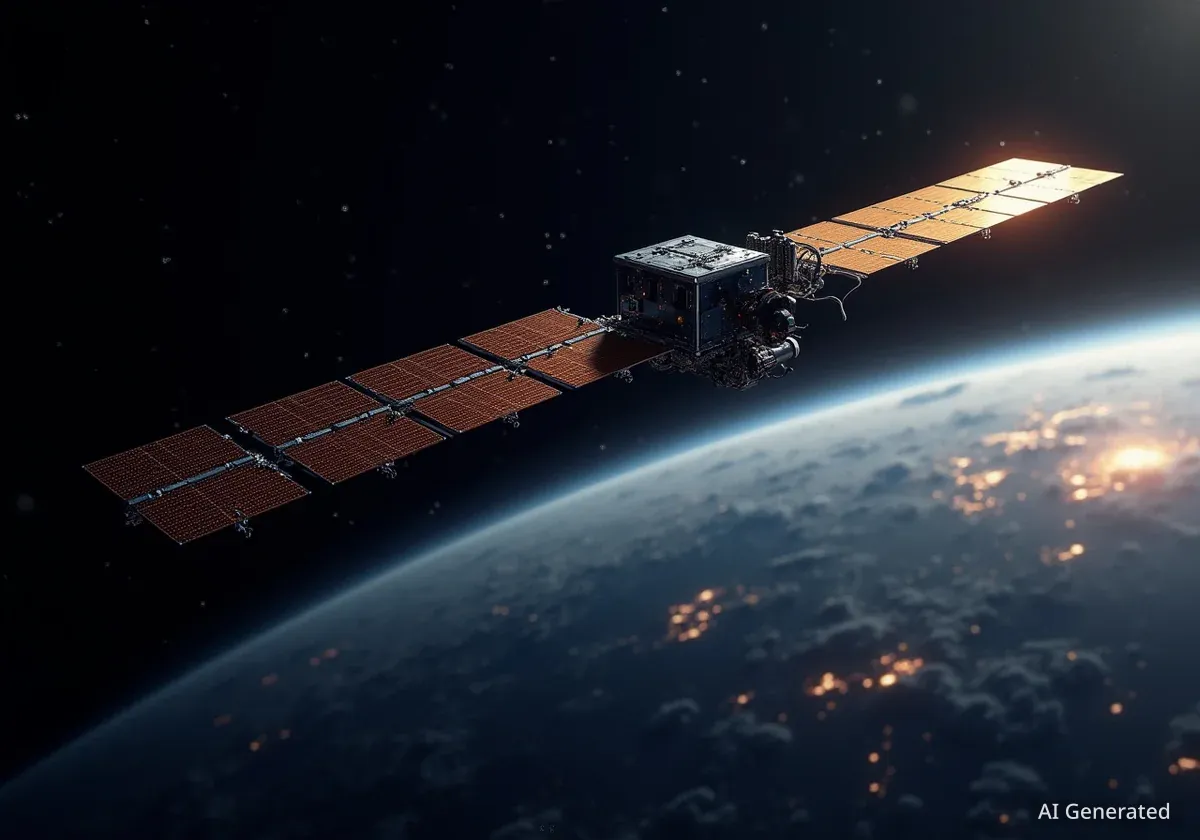The United States Space Force has officially declared its Advanced Tracking and Launch Analysis System (ATLAS) operational. This new system is designed to significantly improve the military's ability to monitor objects and activities in space, a capability known as Space Domain Awareness (SDA).
The activation of ATLAS marks a critical step in modernizing the nation's space defense infrastructure. It will replace the Space Defense Operations Center (SPADOC), a system that has been in use for over three decades, providing a more responsive and integrated platform for space operations.
Key Takeaways
- The U.S. Space Force's ATLAS system is now fully operational for Space Domain Awareness (SDA) missions.
- ATLAS replaces the legacy SPADOC system, which has been in service for more than 30 years.
- The new system provides enhanced capabilities to detect, track, and respond to activities in space.
- Its development utilized modern, agile software acquisition methods, setting a new precedent for the Department of War.
Enhancing Situational Awareness in Orbit
Space Domain Awareness is fundamental to all Space Force operations. It involves monitoring the space environment to ensure flight safety for satellites, observe actions by potential adversaries, and maintain freedom of operation in all orbital regimes. The domain has become increasingly crowded and contested, making advanced tracking systems essential.
ATLAS provides military operators, known as Guardians, with a powerful new tool. It integrates data from a global network of sensors to create a comprehensive picture of the space environment. This allows for faster and more accurate decision-making when responding to potential threats or orbital hazards.
"ATLAS operational acceptance is a revolutionary leap forward for our warfighters, providing a decisive advantage in Space Domain Awareness," said U.S. Space Force Lt. Col. Amber Johnson, commander of the 2nd Sustainment Squadron.
Lt. Col. Johnson, who operates under Space Operations Command’s (SpOC) Mission Delta 2, emphasized the system's impact. She described it as a "force multiplier that significantly enhances our ability to rapidly detect and respond to emerging threats, ensuring continued space superiority."
What is Mission Delta 2?
Mission Delta 2 is the U.S. Space Force unit specifically focused on Space Domain Awareness. It is responsible for preparing and presenting combat-ready forces to execute missions that involve monitoring and characterizing man-made objects in orbit. The 18th Space Defense Squadron and 2nd Sustainment Squadron are key components of this delta.
Transition from a 30-Year-Old Platform
A primary objective of the ATLAS program was to end the operational reliance on the Space Defense Operations Center (SPADOC). While SPADOC has served the nation for over 30 years, its aging architecture presented limitations in a modern, fast-paced environment.
ATLAS is built on a modern and integrated architecture designed for a warfighting domain. This structure allows for continuous updates and improvements, ensuring the system can adapt to new challenges and evolving technologies in space.
The operational acceptance followed a rigorous trial period. During this phase, ATLAS had to demonstrate its ability to meet and exceed the capabilities of the legacy system. The successful transition was a collaborative effort involving Space Systems Command (SSC), Space Operations Command (SpOC), and the Space Force Program Executive Office (SFPEO) for Battle Management, Command, Control, Communications, and Space Intelligence (BMC3I).
A New Model for Software Acquisition
ATLAS is one of the first major programs within the Department of War to successfully use modern software acquisition pathways. This agile development approach allows for faster delivery of capabilities and continuous iteration based on operator feedback, a significant shift from traditional, slower procurement models.
A System Built for Continuous Evolution
Officials involved with the program stressed that operational acceptance is a milestone, not an endpoint. The system is designed for ongoing development to address emerging gaps and counter the evolution of adversary capabilities.
“The ATLAS team remains dedicated to continuous improvement, ensuring that the software is continuously evolved to meet emerging gaps in step with the evolution of space capabilities,” stated Ms. Shannon Pallone of SFPEO BMC3I.
This commitment to evolution is a core principle of the program. The SFPEO BMC3I will manage the system's lifecycle in partnership with SpOC's Mission Delta 2, which will operate and sustain it. This close collaboration between the development and operational communities is key to its success.
Operational Impact for Guardians
For the Guardians who monitor space daily, ATLAS represents a significant upgrade in their ability to perform their mission. The system is designed to help them learn, understand, and act more quickly during complex operations.
Lt. Col. Laurel Jodice, commander of the 18th Space Defense Squadron, highlighted this benefit. "SDA is fundamental to all U.S. Space Force operations, and advancements like ATLAS keep our focus ahead of evolving threats in the space domain," she said.
The successful deployment of ATLAS is seen as a direct result of Mission Delta 2's focus on speed, iteration, and mission alignment. This approach ensures that critical tools are transitioned rapidly to the warfighters who need them most.
The Broader Role of SpOC and SSC
The development and deployment of ATLAS involved two of the Space Force's three main field commands.
- Space Operations Command (SpOC): As the service's force provider, SpOC is responsible for generating and presenting combat-ready space forces. It is organized into eight mission deltas covering areas from SDA and missile warning to satellite communications and orbital warfare.
- Space Systems Command (SSC): As the acquisition arm of the Space Force, SSC is responsible for developing and delivering new capabilities. It manages an annual acquisition budget of $15.6 billion and works with industry, government, and international partners to outpace emerging threats.
The successful collaboration between these commands on the ATLAS program demonstrates the Space Force's integrated approach to developing and fielding advanced technology to maintain the nation's strategic advantage in space.





